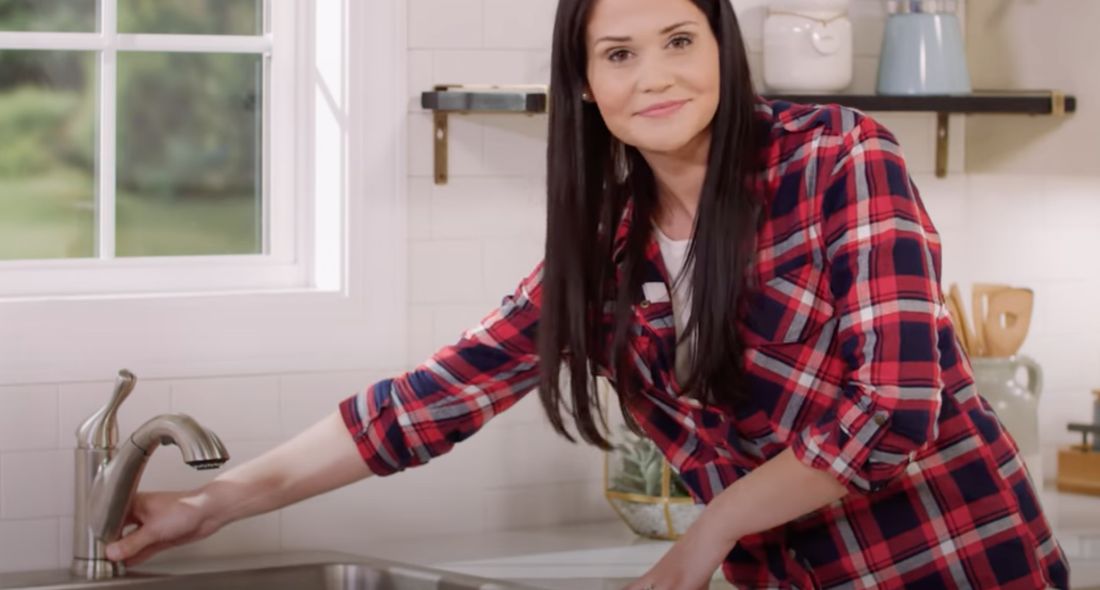Were you searching for help and advice around What Causes Leaky Faucets & How To Fix Them?

Leaking faucets may appear like a minor hassle, yet their influence surpasses just the inconvenience of the noise. From drainage to sustaining unneeded economic prices and health and wellness threats, neglecting a dripping tap can bring about various consequences. In this write-up, we'll explore why it's critical to address this common household issue quickly and properly.
Wastefulness of Water
Ecological Influence
Leaking taps contribute dramatically to water waste. According to the Environmental Protection Agency (EPA), a solitary tap trickling at one drip per secondly can waste greater than 3,000 gallons of water each year. This not just strains water resources yet also affects ecosystems and wild animals depending on them.
Financial Prices
Enhanced Water Bills
Past the environmental effect, leaking taps can blow up water expenses considerably. The gathered wastage with time translates right into greater utility expenses, which might have been avoided with timely repairs.
Potential Residential Property Damages
In addition, prolonged leaking can bring about damage to components and surface areas bordering the faucet. Water buildup can trigger discoloration, corrosion, and also structural concerns if left unattended, causing additional repair costs.
Health Concerns
Mold and Mildew Development
The continuous presence of dampness from a dripping faucet develops a perfect setting for mold and mildew development. These fungis not just compromise indoor air high quality yet likewise pose health and wellness threats, particularly for people with respiratory conditions or allergic reactions.
Waterborne Diseases
Stationary water in leaking faucets can become a breeding place for microorganisms and other pathogens, boosting the threat of waterborne diseases. Impurities such as Legionella microorganisms prosper in stagnant water, potentially leading to severe illnesses when ingested or breathed in.
Do it yourself vs. Expert Repair work
Pros and Cons of DIY Repair Work
While some may attempt to fix a trickling faucet themselves, DIY repair services come with their own set of difficulties. Without appropriate expertise and tools, do it yourself efforts can intensify the problem or result in incomplete repairs, lengthening the issue.
Benefits of Working With a Professional Plumber
Hiring a specialist plumber guarantees that the underlying cause of the leaking faucet is attended to properly. Plumbers possess the expertise and tools to diagnose and repair faucet issues effectively, conserving time and lessening the threat of further damage.
Step-by-Step Guide to Repairing a Dripping Tap
Devices Required
Prior to attempting to repair a leaking faucet, gather the required devices, consisting of a flexible wrench, screwdrivers, substitute components (such as washing machines or cartridges), and plumber's tape.
Common Faucet Issues and Their Solutions
Determine the type of faucet and the details issue causing the drip. Usual issues consist of damaged washers, rusty shutoff seats, or malfunctioning O-rings. Describe supplier directions or on the internet tutorials for detailed guidance on repair work.
Preventive Measures
Normal Maintenance Tips
To prevent leaking taps, perform routine maintenance such as cleaning aerators, checking for leaks, and changing worn-out components promptly. Furthermore, think about setting up water-saving devices or upgrading to more efficient fixtures.
Importance of Prompt Repair Works
Attending to dripping faucets as soon as they're observed avoids additional water wastage and potential damage, inevitably saving both water and cash in the long run.
Influence On Residential Or Commercial Property Value
Perception of Well-Maintained Building
Preserving a building in good condition, consisting of resolving maintenance concerns like trickling faucets, improves its viewed worth and worth amongst prospective purchasers or renters.
Influence on Resale Value
Features with properly maintained plumbing fixtures, consisting of taps, command greater resale worths in the property market. Dealing with dripping faucets can add to a favorable impression throughout residential property evaluations and negotiations.
Environmental Duty
Private Payment to Preservation
Taking obligation for taking care of dripping taps straightens with broader efforts toward water preservation and environmental sustainability. Every person's activities jointly make a significant effect on maintaining precious sources.
Lasting Living Practices
By prioritizing punctual repair services and embracing water-saving behaviors, people add to sustainable living practices that profit both present and future generations.
Conclusion
Dealing with a leaking faucet exceeds mere comfort; it's a vital step toward saving water, decreasing monetary costs, and protecting health and wellness and home. Whether through DIY repair services or specialist support, acting to take care of leaking faucets is a little yet impactful method to promote liable stewardship of sources and add to a much healthier, more lasting future.
How to Fix a Dripping or Leaky Faucet
A leaking faucet is one of the most common problems that homeowners encounter, but it being commonplace doesn’t make it any less annoying. The constant drip drip drip of a leaking bathtub faucet, showerhead, or sink tap can disturb your home’s serenity. Left neglected, a dripping faucet can also result in higher water bills and discoloration or mold growth in your sink or plumbing fixtures.
Fortunately, you don’t have to be a trained plumber to know how to stop a dripping faucet. With some basic tools, replacement parts, and a little patience, leaky faucet repair is a breeze. In this article, we’ll explain what causes dripping faucets and how you can fix them.
What Causes a Leaking Faucet?
Kitchen and bathroom faucets come in all manner of designs, but most involve some combination of valves, O-rings, seals, and washers. The O-ring is usually the weakest link, but any one of these pieces can wear down over time. Heat, moisture, temperature fluctuations, minerals, mold, and movement can contribute to warping and corrosion, breaking the watertight seal. This just comes with the territory of being a homeowner. Everything is always subject to wear and tear, and some component parts of your appliances and fixtures need to be replaced on occasion. At least replacement O-rings are cheap!
More rarely, dripping faucets can be a symptom of excessively high water pressure. Were this the case in your home, you would probably notice that the leak is not isolated to one faucet. Water pressure issues are harder to resolve on your own. We recommend contacting a professional plumber if you suspect your water pressure is too high.
How to Fix a Dripping Faucet
Pipe wrench or monkey wrench Allen wrench set Screwdrivers Old towel or rag Shut off the water.
Before you do anything, you need to turn off the water to keep from drenching your kitchen or bathroom. You should find a valve under the sink and against the wall. Once you’ve turned this valve, try turning the faucet on to confirm that the water source has been cut off.
If you can’t locate your local valve for the faucet you’re working on, you can always shut off the water to the house at the main valve. Of course, this will prohibit anyone from using the sinks, showers, or toilets while you’re working on the faucet that’s giving you trouble.
Plug or block the drain.
You’ll be disassembling the faucet and removing some small bits of hardware. Plug the drain with a stopper or rag to avoid the possibility of a small screw falling into your P-trap.
Take apart the faucet assembly.
There are several varieties of kitchen and bathroom faucets, each with its own manner of assembly. For detailed instructions on how to disassemble your faucet, you can refer to the fixture’s manual or contact the manufacturer. If you know whether you have a ball, disc, cartridge, or compression faucet, you can find detailed schematics online.
In general, you need to begin by removing the faucet handles. You might notice a small screw that you’ll need to remove with a screwdriver or Allen wrench. If you don’t see any visible securing hardware, it’s likely hidden under a decorative cap that can be unscrewed or popped off with flathead screwdriver.
Remove each piece methodically, consulting a schematic when necessary. Take notes or arrange the pieces in such a way to make it easier to correctly reassemble the faucet later.
Remove the cartridge.
Once you’ve removed the handles and securing hardware, you should be able to remove the valve cartridge or stem. Some cartridges will slide right out. Other faucet models will require you to loosen a nut with a pipe wrench before you can remove the valve stem.
Examine the exposed hardware.
With the cartridge or stem removed, inspect the component parts. Check the rubber O-rings for wear and tear. Also examine the seat washer for corrosion or other damage. These pieces are usually the responsible parties for a dripping faucet, but it’s worth inspecting the other component parts while you have the faucet disassembled.
Find replacement parts.
Once you’ve identified which faucet component has failed, find an identical replacement. Your local hardware store should have O-rings, seat washers, and other standard components in stock. If you have a luxury or uncommon faucet, you may have to contact the manufacturer for a replacement part.
It’s a good idea to take your old parts with you to the hardware store so you can compare them with the store’s inventory and be sure you’re purchasing the correct replacement.
Reassemble the faucet.
With your new parts in hand, reconstruct the faucet and handles. Don’t be tempted to overtighten screws or nuts. You might think this could create a better seal, but it can instead damage or bend a delicate part of the assembly and create a new problem for you.
Turn on the water and test the faucet.
The only thing left to do is test your work. Unplug the sink, turn the water back on, and try the faucet. Congratulate yourself on a job well done!
https://www.libertyhomeguard.com/how-to-fix-a-dripping-or-leaky-faucet/

We were made aware of that editorial on Why Are My Faucets Dripping (And Can I Fix It Myself)? from a buddy on a different web blog. Are you aware of someone else who is fascinated by the subject? Please feel free to share it. We enjoy your readership.